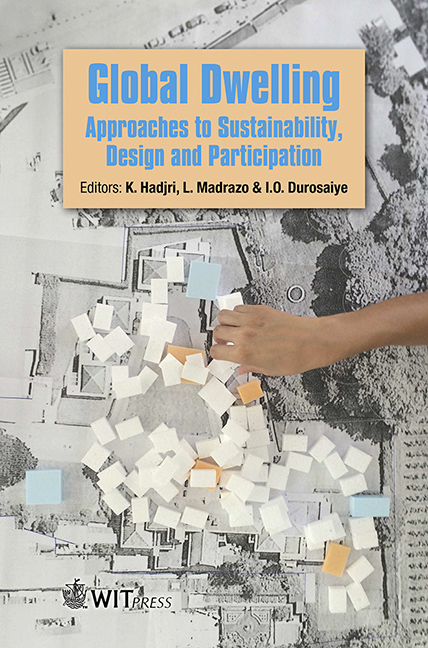Participation For Sustainability: Why Looking Back To Design The Future?
Price
Free (open access)
Transaction
Volume
193
Pages
12
Page Range
235 - 246
Published
2020
Size
2,994 kb
Paper DOI
10.2495/GD170191
Copyright
WIT Press
Author(s)
E. Giorgi, T. Cattaneo, G. D. Manzoni
Abstract
As demonstrated by the Italian experience of Olivetti in Ivrea (1950–1960), by the design-philosophy of Giancarlo De Carlo (1973), and as argued by Saskia Sassen (2006, 2014), citizen-centred design and sharing practices represent the main path to a sustainable future. The aim of this research is to define the relations between historical and contemporary forms of participation in architecture, by investigating three key concepts: design, living, and programs. Ten contemporary projects and three historical typologies were analysed; these are characterized by freedom of participation: the Chinese “Tulou”, the Israeli “Kibbutz”, and the Italian rural farm “Cascina”. The work is based on a comparative analysis of historical and contemporary groups composed by the chosen case studies. The projects of both groups have been compared on the basis of their social, functional, programmatic, spatial, and sharing organization. The output is a cloud of concepts that put in relation past and contemporary experiences with participation (in terms of design, living, and programs) for a sustainable development.
Keywords
communities, comparison analysis, contemporary and historical





